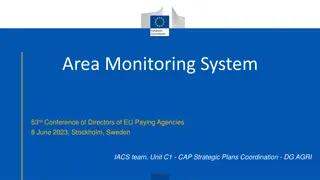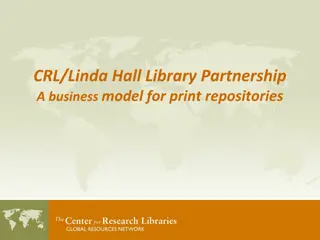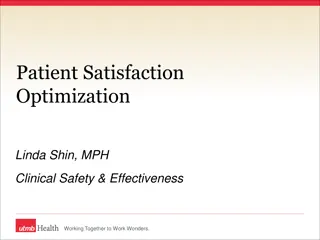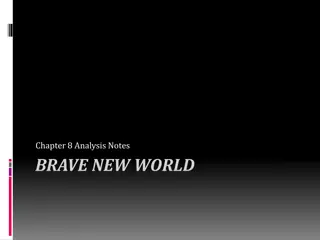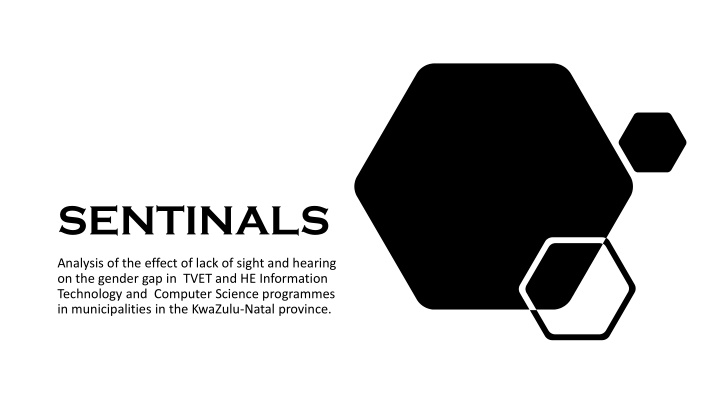
Gender Disparities in Enrollment Linked to Sensory Difficulties in IT Programs
"An analysis in KwaZulu-Natal Province explores how lack of sight and hearing impacts the gender gap in Information Technology and Computer Science programs. Data suggests a correlation between sensory difficulties and enrollment, with more females facing challenges. Statistical tests reveal significant associations, emphasizing the need for further research and support. Explore the complex dynamics of gender, disability, and education in these domains."
Download Presentation

Please find below an Image/Link to download the presentation.
The content on the website is provided AS IS for your information and personal use only. It may not be sold, licensed, or shared on other websites without obtaining consent from the author. If you encounter any issues during the download, it is possible that the publisher has removed the file from their server.
You are allowed to download the files provided on this website for personal or commercial use, subject to the condition that they are used lawfully. All files are the property of their respective owners.
The content on the website is provided AS IS for your information and personal use only. It may not be sold, licensed, or shared on other websites without obtaining consent from the author.
E N D
Presentation Transcript
SENTINALS Analysis of the effect of lack of sight and hearing on the gender gap in TVET and HE Information Technology and Computer Science programmes in municipalities in the KwaZulu-Natal province.
Cyril Chironda The Sentinels Linda Hasi Musawenkosi Nyathi Usaamah Obaidullah
PROBLEM STATEMEMT We look at the population of male and female students at TVET Computer and Information Science programmes in different municipalities in the KZN province. We hypothesize that female student attendance for these type of programmes will be less than that of males due to outdated gender norms. Furthermore, we will look at the added effect of lack of sight and hearing on Computer and Information Science programme admissions by both gender populations.
Introduction Summary statistics percentages We get the (clean) data provided by the organizers (CS_2016 data sets). The data contains weights of persons with sight and audio difficulty per ward. We combined (connected) this with another data set provided that contained enrollment numbers in TVET and HE institutions per ward as well Male Female More females than males have difficulty in sight Sight 35% 65% Data suggest that there are more males than female in IT tertiary related programs in KZN province. More females than males have difficulty in hearing Hearing 41% 59% More males are enrolled in TVET IT subject The data also show that there are more woman with hearing and sight difficulties than woman in the same region. TVET 54% 46% HE 59% 41% More males are enrolled in HE IT subjects
Test For Relationship We utilized a ^2 test to test if there is any relationship between these sensory difficulties and enrolment into IT TVET and HE programmes. The test showed that there is enough evidence to suggest dependency between the 2 variables at 95% level of significance. To solidify this we performed a non parametric McNemar s Test to see if this is just a coincidence but the test showed at 90% level of significance that there is enough evidence provided by the data to suggest that there is association between the two variables. Hence we concluded that there is a relationship between the two variables, as the evidence is sufficient. Furthermore, we fit a linear regression model with enrolment dependant on sensory difficulties.
Model 1 INFORMATION TECHNOLOGY AND COMPUTER SCIENCE AT TVET AND HE We fit a simple linear regression model enrolment in these programmes dependent on the number of females with sight difficulties. The model shows that there is a strong positive correlation between enrolment in these programmes and sight difficulties. This is shown by coefficient of correlation (r) being 0.76. The R-squared of the model is 64% meaning that 64% of the variation in the data is fully explained by the model leaving only 36% explained by other variables. The goodness of fit test shows that the model is a good fit at 90% Level of significance. 100 NUMBER OF FEMALE WITH SIGHT DIFFICULTIES 90 80 70 60 50 40 30 20 10 0 0 100 200 300 400 500 NUMBER OF FEMALES IN TVET AND HE
Model 2 INFORMATION TECHNOLOGY AND COMPUTER SCIENCE TVET AND HE VS HEARING We fit a simple linear regression model The model shows that there is a strong positive correlation between enrolment and Hearing difficulties. This is shown by coefficient of correlation (r) being 0.86 The R-squared of the model is 72% meaning that 72% of the variation in the data is fully explained by the model leaving only 18% explained by other variables . The goodness of fit test shows that the model is a good fit at 90% Level of significance. 400 NUMBER OF FEMALE WITH HEARING DIFFICULTIES 300 200 100 0 0 500 1000 1500 2000 NUMBER OF FEMALES IN TVET AND HE -100
Model Fit Conclusion The models show that not only women are marginalized but, more so, women with auditory and sight difficulties are almost neglected when it comes to IT education at tertiary levels. This will leave women and women with auditory and sight difficulties technically unskilled in the 4th Industrial Revolution . This begs a question: What is the worth of a revolution when it doesn t address 2 of the burning issues of society?
More data needs to be collected. Larger data sets give better insight on the crisis. Furthermore, our study was solely based on data from different municipalities within the KZN province. We propose data to be collected at a national level as this issue could be more widespread. To build better models we need more variables, as there could be more factors, such as income levels, that affect the issue of low of enrolment rates of women and women with sensory difficulties in these programmes. Limitations in our Models and Analysis
Solutions 1. More data needs to be collected and research to be conducted on this issue, so better machine learning and statistical learning models can be made. Better models will give us a more accurate statistical analysis from which we can assess the situation and its severity with greater insight. 2. Work alongside the education departments of local authorities and municipalities at a ward level (grass roots) so that resources can be adequately channeled to this marginalized group. These could include distribution of hearing and sight aids, better-suited facilities in schools and higher education institutions for them to be productive and thrive in and many more. 3. Work with the higher education and TVET institutions to lower the intake grades for females particularly females with the mentioned sensory difficulties - in IT related programmes. In relation, a quota system could be employed at these institutions. Targeted educational funding for this marginalized group would be helpful. Examples of related initiatives for marginalized groups include the Black Economic Empowerment (BEE).
4. Acquisition and distribution of sight and hearing user-friendly devices such as laptops and tablets that are easy to use for people with hearing and sight difficulties. Additionally, we could utilize interactive and role- playing applications in these devices to tap into problem-solving skills and other skills related to this field of study and make technology more appealing to a greater number of female students. For example, those with an aptitude for coding, Creative ways to write code, have a special Integrated Development Environment (IDE) for those with seeing difficulty that uses voice over. For those with hearing difficulty Augmented Reality (AR) puzzle solving which will develop logic to code without any traditional line of code. 5. Dismantling Gender Stereotypes. Gender stereotypes and cultural reinforcement of stereotypes that discriminate and suppress women and women with sensory difficulties are still present. We propose that not only do theses outdated discriminatory values be demolished but to further encourage women and women with sensory difficulties to take up these programmes and build skills in this area. This could be accomplished through constant educational workshops at municipalities under study. Role models and mentors currently enrolled in these higher education programmes could assist women in lower levels of education. Organizations could be set up solely for the purpose of increasing enrolment for these marginalized groups. 6. Beyond teaching them hard skills and programming(limited access),creative and design thinking is very crucial in the 4IR. Thus, working around limitations to access to coding, we can rather design programmes that allow people with difficulty hearing and seeing into business and development decisions by joining as the creative brains of the team. 7. Strategic partnerships with big tech companies to create platforms and software that will allow access to the 4IR and participate and be able to impact the world.
END Thank you Any questions


